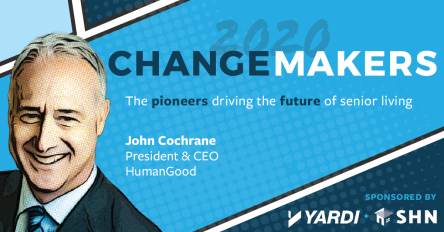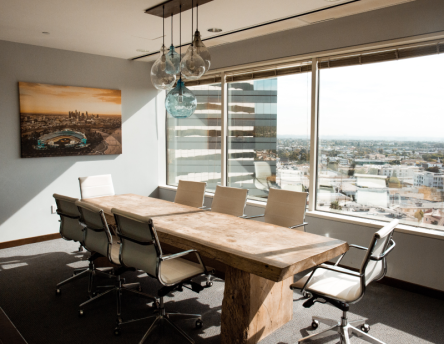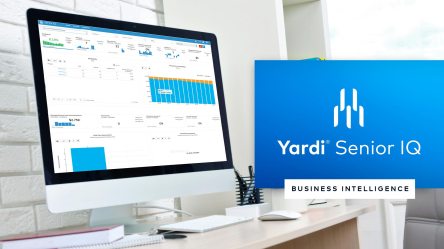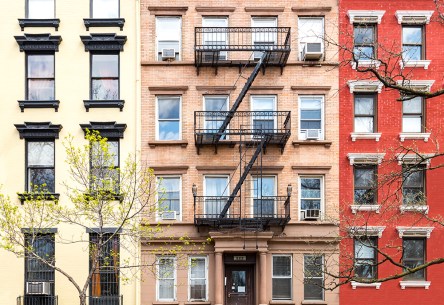Implementing a new EHR system is not a job for one person alone. Especially when you include a medication management solution, complete with pharmacy interfaces. You need a well-coordinated team with the right partners to make sure the rollout is a success. Case in point: Silverado of Irvine, California. The organization specializes in senior care with an emphasis on memory care assisted living, as well as hospice. Silverado’s philosophy of care pursues “a symbiosis of top-notch clinical care and compassion that recognizes each client, resident or patient’s uniqueness.” After years of growth on ALMSA eMAR, Silverado was interested in upgrading to further support their nurses. Since they were already a Yardi client, leadership sought a solution that would not only integrate with Yardi Voyager but also provide advanced clinical capabilities for residents across the continuum of care. The Solution: Yardi EHR and Yardi eMAR Yardi EHR is an electronic health record solution designed for assisted living, independent living, memory care and skilled nursing. The single-vendor solution combines clinical intake processing, resident assessments, care planning, wound treatment, behavior management and more in a browser-based platform optimized for mobile devices. Yardi eMAR simplifies medication administration through an online solution that interfaces seamlessly with pharmacy partners. Advanced drug database and clinical support functionality also helps expedite order entry and promote compliance. The Story: Collaborating for Improved Clinical Outcomes Silverado leadership understood the importance of allocating resources to ensure successful continuity of care, resident safety and compliance. They knew from the start to accomplish these goals would take a collaborative effort. Based on their experience working together, Yardi was selected as the right partner, and a pilot began in early 2018. “Our pilot went extremely well,” said Beth McCurdy, senior director of clinical informatics at Silverado. Nursing staff...
OHCA 2020
Celebrating Health Care Heroes
Over the past half year, senior living teams have been working tirelessly to keep residents safe, engaged and happy. Although the pandemic has created many new challenges for the industry, it’s been incredible to see how many people have stepped up to help. In honor of these courageous, masked caregivers, the Oregon Health Care Association are “Celebrating Health Care Heroes” as the theme for their biggest event of the year: the OHCA Annual Convention and Trade Show. Of course, the event, always well attended, is making changes to protect the health of members and their residents. It’s now a live virtual experience, scheduled for September 15 and 16 with pre- and post-event activities as well as on-demand education available afterwards. The event may be different than what you’re used to, but there’s a lot to be excited about: Live-streamed keynotes and sessions, including tracks on leadership, clinical, nursing facilities, quality improvement, COVID-19 and more Networking opportunities to connect with other attendees and presenters through interactive live discussions and Q&A chats The OHCA Awards ceremony where deserving staff are recognized for their dedication to the care profession Yardi is proud to sponsor the awards ceremony this year. Now more than ever, it’s important to honor those who go above and beyond for others. As this year’s theme makes clear, these hard-working individuals are true heroes. Visit Yardi on the virtual trade show floor During the event, you’ll also be able to stop by our booth to see what’s new with the Yardi Senior Living Suite. We’ll have plenty of resources to download, products to showcase, plus a giveaway for a lucky few! And if you want to talk with us face to face, there’s even a video chat option. We’re grateful to each and every...
Compass Commercial
CRE firm is new Yardi client
Bend, Oregon is well-known for its gorgeous mountains, forests and rivers, well-balanced and high quality of life, and prospering remote work culture (even prior to COVID-19). So, it’s no surprise that despite the pandemic, real estate is continuing to thrive in Central Oregon. Nearby cities Redmond (home to the Bend/Redmond regional airport), Sisters (a charming tourist destination) and Prineville (hometown of Les Schwab tires and now the location of a major Facebook data center) are seeing a boost as well. The team at Compass Commercial Real Estate Services, a new Yardi CRE client, knows that firsthand. They have been providing asset management, construction, brokerage and leasing services since 1996. Currently, their management portfolio includes 700,000 square feet of office assets, 500,000 square feet of retail, and 500,000 square feet of industrial. “We originally started out managing single individual assets, and as Bend grew, we began moving into the next generation of institutional buyers and local owners with portfolios,” said Jackie Niebling, Vice President of Asset and Property Management and a principal broker for Compass Commercial. “Bend has become a hotbed for individuals seeking work-life harmony. We’re seeing a great deal of activity from outside investors wanting to invest in Bend so that they can relocate here and enjoy our lifestyle,” Niebling summarized. A privately held company, Compass Commercial is not only the largest CRE provider in the region but also a leading authority on regional real estate activity. They even publish a quarterly guide to local rent and transaction activity aptly titled “Compass Points,” which offers a comprehensive snapshot of CRE trends. The most recent edition focused in on the impacts of the pandemic on Central Oregon real estate. And apart from smaller office leases, things appear to be holding up well. Retail and...
End of Urbanization?
New attention for suburbs
For years, 24-hour and 18-hour cities, and the live-work-play concept, have been mantras in commercial real estate. Suddenly, however, cities are facing a pandemic-driven exodus. Is this a temporary blip or the start of a long-term trend? COVID-19’s impact has been particularly deep in major metropolitan areas such as New York City, Los Angeles, Chicago and San Francisco office space, which have also seen sharp drops in apartment occupancy rates and rents as the city centers are largely shut down and residents shelter elsewhere. In Manhattan, for example, office buildings that were closed for months remain mostly empty upon re-opening, as employers avoid putting workers at risk and people avoid public spaces. Midtown streets that are typically teeming with tourists are nearly empty as Broadway and other entertainment venues remain shut. New York City’s story is being played out in city centers across the country. Not only do urban areas temporarily lack the jobs and cultural institutions that drew people there, but the crowds and closeness are suddenly an element to be feared rather than fascinate. Few if any saw this coming, as growth has coalesced in cities in recent years. The United Nations has forecast that 75 percent of the global population would live in cities by 2050, doubling their size, and the U.S. seemed to be headed in that direction. A recent study of the largest 30 U.S. metros by the George Washington University School of Business and Smart Growth America in conjunction with Yardi Matrix found that walkable neighborhoods encompassing office, housing, retail and entertainment grew faster and produced higher absorption and rent growth over the last decade than counterparts without that combination. During that time, 70 percent of the jobs created were in the top 50 U.S. metros. Corporations have been...
Dementia Care Reimagined...
Ikea + H.M. Queen Silvia
Two unlikely forces are improving dementia care in Sweden. A member of the royal family is collaborating with a ready-to-assemble home supply store. Together, they’ve reimagined senior housing development in a way that is affordable, sustainable and chic. The collaboration couldn’t have come at a better time. By 2040, nearly one in four Swedes will be 65 years or older. While long life expectancy is a good problem to have, the government desperately seeks affordable ways to fund care for its aging population. Queen Silvia has taken a personal interest in the nation’s senior care. After losing her mother to Alzheimer’s, she became more involved in dementia care initiatives. BoKlok, an affordable and sustainable housing partnership between Ikea and Skanska, captured her attention. The three powers began a multi-decade endeavor to develop an affordable approach to housing the nation’s elderly while keeping quality and sustainability at the forefront of their efforts. SilviaBo: affordable, sustainable housing Together, BoKlok and Queen Silvia created SilviaBo, senior housing developments that rose to the demands of affordability, quality and comfort. They are designed to allow seniors to age in place rather than nursing homes. “To take care of elderly people, that cost is exploding,” BoKlok CEO Jonas Spangenberg told CNN Business. “It’s much cheaper for society and the public to give them service back home.” To date, SilviaBo includes 11,000 prefab homes with communities in Sweden, Norway and Finland. Their success has relied on the Ikea model for mass production. To keep costs low, the homes are produced in high volumes in warehouses, succinctly packed and then shipped to the site. Ikea and Skanska also took responsibility for the supply chain from start to finish: land acquisition, production, assembly, marketing and leasing all take place under the BoKlok umbrella....
Yardi + AIM
Live webcast Sept. 17
Are you missing live events? While we can’t bring back the hum of the tradeshow floor just yet, we’re excited to team up with AIM to host a live webinar event that we hope will rival some of your favorite speaking sessions from conferences past. Keep reading to see how we’re bringing industry leaders from Bozzuto, KETTLER and The Management Group together on one virtual stage … and why you want to reserve your seat asap. The New Apartment Marketing Playbook: Consumer Behavior Has Shifted, Have You? Thursday, Sept. 17, 11 a.m. PDT Even as the COVID-19 pandemic continues, renters are still on the move. With social distancing measures in place, renters expect to interact with properties in new ways. This increasing demand for virtual and contactless engagement is nothing new. But now that we’ve adapted to a new norm and the virtual conveniences that come with it, there’s no going back. Considering this shift in consumer behavior, here are some questions your property management teams may be facing: Is it possible to create an online experience as powerful as a visit to your properties? How can you offer game-changing online and self-service tools that don’t compromise your security standards? What should your leasing agents be doing to pivot and provide real value in an increasingly virtual world? “Don’t lose customers to your competitors while you’re waiting for things to ‘get back to normal.’ Normal as we knew it is changing. Taking this opportunity to make smart updates to your leasing process will have a lasting positive impact on your business in the months and years ahead,” said Esther Bonardi, session moderator and vice president of marketing at Yardi. During this live online event, you will learn how to: Convert more renters by creating authentic experiences onlineLease more units by offering a range of tour types to fit every needImprove the prospect experience while prioritizing the safety of your team and propertiesEvolve leasing positions to meet the demands of the new customer experience Speakers include: Jamin Harkness, Executive Vice President, The Management GroupKelley Shannon, Senior Vice President, Marketing & Customer Engagement, BozzutoDaryl Smith, Senior Vice President & Chief Marketing Officer, KETTLER Free ebook Webinar registrants will receive a free copy of The New Apartment Tour with their confirmation email. This exclusive ebook details three ways you can modernize different tour types at your properties to convert more renters, both online and in person. Save your seat today to get your...
Yardi Opens Paris Office...
Expanding in France
Developing investment and property management software since 1984, Yardi, world leader in the real estate technology sector, has entered the French market with the opening of a Paris office. Richard Gerritsen, regional director for Europe, explains what the company intends to bring to the French real estate sector in this interview, which was first published in Business Immo Europe. Business Immo: What is Yardi proposing to the French real estate sector? Richard Gerritsen: We don’t consider ourselves a software company anymore, but a technology partner that provides solutions and services to support the activities of investment and asset managers. We provide the dashboards, the reports and the data that our clients need to make their decisions, which means we provide more than just software. Where we traditionally focused on the back-office activities, we are now completely focused on providing insight on the performance and the health of the portfolio, whether it is more on the day-to-day asset management functions such as lease or vacancy levels, or at a higher strategic level, on the performance of the assets. BI: Yardi has opened an office in Paris. What is your plan for France? RG: Our clients have properties in 29 countries across Europe, where we have seen an increased interest in high-quality modern technology helping asset managers. Over the last two years, we have spent a lot of time in France, which is now the fastest-growing country on the continent for the adoption of Yardi technology. Because we have high expectations for the continued growth of Yardi in France, we feel the time is right to open an office in Paris. BI: How does Yardi differentiate itself from its competitors in France? RG: Traditionally, the French real estate market has been served with software firms that...
Changemakers Series
John Cochrane, HumanGood
The past decade has been one of extensive change for the senior living industry. In the wake of the Great Recession, many organizations reorganized and consolidated to adapt. The following years saw steady growth and new construction. Now, in the present day, the pandemic is driving transformation and action at a never-before-seen pace. John Cochrane, president and CEO of non-profit HumanGood, has led his company through all of it, adjusting course when needed to better serve their communities. In his Changemaker interview with Senior Housing News, he opens up on his experience. “In a curious way, I think that the economic crisis was a turning point for the industry, and certainly for our company, in creating urgency and creating the need for clarity and accountability,” Cochrane said “That’s where a lot of what we’re doing today started, more than 10 years ago.” With its impact on the industry, COVID-19 has made it clear that speed, transparency and accountability are necessities. Keep reading to discover how HumanGood responded and what Cochrane and his team are doing to successfully adapt to disruption. First, this year has brought unprecedented change. How has HumanGood responded? The pandemic has changed the world, bringing new challenges on how to protect our communities, team members and residents. Operationally, we have sharpened our focus on infection control protocols, communications and technology solutions. The pandemic has shined a big spotlight on our ability to operate safely while continuing to provide an on-brand experience in this dynamic environment. One of the biggest changes we have made, and continue to refine, is to tracking and testing for COVID-19. The ability to trace and test will impact our industry’s ability to provide the services, and care, that can help our residents and team members live their...
Smart Glass
COVID-19 Protection
Smart glass technology allows for the control of light by switching from clear to shaded or completely opaque, depending on how strong the incoming light is and how dark you want to make the room. In other words, it alters the amount of light transmitted through typically transparent materials. The same technology found in smart glasses can be integrated into windows, partitions or other transparent surfaces and can be used in multiple sectors such as architecture, interior design, auto, offices, retail windows and consumer electronics. A smart glass, also called light control glass, switchable glass or privacy glass, can be of two types: active, when changeability requires an electrical charge, and passive, when it doesn’t require that. There are a few types of active switchable glass technologies and common applications: Polymer Dispersed Liquid Crystal glass (PDLC)—seen in privacy partitions in various industries Suspended Particle Device glass (SPD)—windows that tint to shade Electrochromic Device glass (ECD)—coated windows that slowly tint for shading Passive smart glass technologies include: Photochromic glass—eyeglasses with coatings that automatically tint in sunlight Thermochromic glass—coated windows that change in response to temperature How Does it Work? Smart glass managed through electricity allows users to control various forms of light by switching from opaque to transparent, allowing for dynamic light control. PDLC is most commonly used for indoor applications. The technology can be optimized to maintain its properties outdoors as well. The technology behind this type of active smart glass contains liquid crystals, a material that shares characteristics of both liquid and solid compounds, which are dispersed into a polymer. PDLC switches glass from dimmable degrees of opaque to clear in milliseconds. If you want privacy, projection and whiteboard use, PDLC is ideal when it’s opaque. The film limits visible light, but doesn’t...
iPhone 12
Next Expectations
The annual release of a new iPhone is a big deal for Apple tech lovers. Although the company doesn’t really release advance leaks about their new editions, there are always rumors of anticipated new features. Apple should launch its new set of phones in the month of September as usual, but the coronavirus outbreak could delay its release date. The new devices will be likely called iPhone 12, iPhone Max, iPhone Pro and iPhone Pro Max as since the iPhone 3G up to the iPhone 8 release, the company used sequential numbers for their names. There are also a lot of discussions about whether a 5G phone will be released, but many believe that all new devices will have this connectivity. The four models that are expected to launch this fall are: 4-inch iPhone 12 1-inch iPhone 12 Max 1-inch iPhone 12 Pro 7-inch iPhone 12 Pro Max iPhone 12 Design and Displays The Apple iPhone 12 is supposed to be taking us back in time, before the release of iPhone 6, and have squarer edges compared to the past phones which had more rounded edges. Oher sources have shown that the devices will be slightly larger, due to its larger displays, but thinner overall than last year’s models—7.4mm for the 6.7-inch device, compared to the 8.1mm iPhone 11 Pro Max. Many iPhone 11 users are hoping for a free-notch phone, or a reduced notch, but without it how would a face recognition be possible? In terms of displays, all devices should have OLED displays, compared to the current version of iPhone 11 which has LCD display, with only the Pro models having OLED. Regarding the hardware of the new device, a A14 processor, 4GB of RAM and 128 GB or 256GB of storage...
Improving Energy Efficiency
For Class B and C
Class A commercial buildings get all the fanfare. They have the nicest amenities, the best views and, of course, the highest rent. But let’s not overlook the value that class B and C spaces bring to communities and business owners. Often located in suburban areas or lacking glamour that high rises provide, these buildings still possess many advantages and simply don’t get the same type of recognition. A recent ENERGY STAR® report stated that 94% of all U.S. commercial buildings were properties under 50,000 square feet. Because class B and C buildings significantly outnumber class A, they can lead the way in contributing to a cleaner environment, improved leasing practices and cost savings techniques. At the recent 2020 Virtual BOMA Conference, Marta Schantz, senior vice president of Urban Land Institute (ULI), explained three major challenges for class B and C owners in regard to energy efficiency: Information constraints – Stakeholders are so consumed with day to day operations that energy efficiency gets put on the backburner. Lean on your property manager for data and best practices and educate yourself about building benchmarks to understand what’s working or not. Resource constraints – These buildings don’t have the budget or staff size of class As, so they often lack someone specifically assigned to energy projects, or a third party hired to oversee this aspect of the portfolio. Funding constraints – B and C class buildings typically don’t have capital planning funds to invest in larger retrofits with up-front costs. Owners also may not be able to take on long-term debt. How can a building owner overcome some of these challenges? Primarily, there are financing options available so that B and C owners can reach long term savings goals: cost recovery in terms of lease forms, utility on-bill financing, commercial property assessed clean energy financing (C-PACE), among others. As Schantz explained, an HVAC retrofit alone may not provide the necessary ROI, but bundled with LED installation or sensor installation, it can provide long-term savings with a relatively short-term payback process. As explained in a 2020 BOMA report, class B and C properties could save 15% on energy costs with basic low- to no-cost initiatives, or even up to 35% with the larger investments detailed above. BOMA’s research has found that sustainability initiatives can reduce operating expenses for class B and C buildings between $0.26 and $0.61 per square foot and increase the net operating income for these properties between 2.4% and 5.6% per year. What are some of the simplest energy solutions to implement? According to Joey Cathcart, associate at the Rocky Mountain Institute, here are some of the best low-cost, quick payback measures for energy savings across property type: LED lighting: LEDs use significantly less energy and last much longer than incandescent lighting. Controls/Sensors: Install LED’s in high-use areas and controls or sensors in low-use areas like closets and restrooms. Programmable thermostats: Simply program your temperature setting in times of low or no occupancy. Energy audits: Establish a baseline and identify where improvements can be made. Local authorities often provide grants for these projects. Window filming or shading: Reduce demands on HVAC and reduce solar radiation with tinting or shading. Lease provisions and green leases help increase investor, owner and tenant interest. “They help to overcome split incentives, improve transparency and indicate a commitment to sustainability,” Cathcart said. He detailed three low cost components to drive the highest lease impact: Integrate new building expectations by implementing low or no cost strategies into standard operating procedures. Integrate language into leasing that includes periodic energy audits. Tenants see this as a commitment to sustainability. Document operating best practices to optimize performance in common areas and tenant spaces. “The best time to integrate provisions is either during tenant renewal or at the beginning of a new tenant lease,” Cathcart explained. Eugenia Gregorio, founder and principal at Gregorio Sustainability, presented a case study of The Tower Companies...
Back to the Office
Legal Considerations
One of the most significant factors hindering a smooth return to work has been the legal uncertainties surrounding COVID-19. The main concern is the lack of uniformity in the laws between jurisdictions, and the tightening and loosening of restrictions as cases rise or fall. Therefore, employees, tenants and landlords all need to understand what can and cannot be enforced. Contract clauses, deferrals and concession negotiations have been ongoing since March, and the ramifications of these changes will carry on for months to come. Compliance for reopening If a manager cannot ensure the safety and wellbeing of workers, then an office simply cannot reopen. On a recent Realcomm webinar, Evandro Gigante, partner at Proskauer law firm, explained that compliance for reopening varies by jurisdiction, but New York, where their main office is located, has a thorough set of rules laid out for businesses to reopen. “There is a very robust set of guidelines that include, among other things, the development of a comprehensive health and safety plan which requires a close look at screening, testing, contact tracing, signage and social distancing procedures to be put into action,” he said. The guidelines require a written document detailing expectations for landlords and employers. Administering questionnaires regarding self-health is going to be a key, and there will be many questions about the legality or requirements involved with temperature taking. “Under Equal Employment Opportunity Commission (EEOC) guidelines, you can diagnostically test your employees,” Gigante explained. “But the EEOC has not sanctioned antibody testing for the purpose of making employment decisions.” You can legally collect medical information on individuals, according to the EEOC, including their temperature or their symptoms, as long as you maintain it confidentially and separately from personal files. But here is where different jurisdictions and different guidelines...
Working From Home
Productivity Pluses
Gallup reported that the percentage of employed adults working from home because of the coronavirus went from 31% in mid-March to 49% a few days later, peaking at 62% in mid-April. That’s a lot of people suddenly forced to accept drastic new circumstances. How is working from home, which the COVID-19 pandemic made a necessity in many sectors, affecting business productivity? Problems made worse? Some workers weren’t fully enthusiastic about the work-from-home concept even before the pandemic. About 29% of respondents to a poll of full-time U.S. employees taken in 2019 by outsourcing marketplace platform Airtasker said they experienced difficulty maintaining a healthy work-life balance; 23% of office workers reported the same problem. Remote workers also reported higher levels of stress, anxiety and procrastination. (Telecommuting respondents did appreciate eliminating their commutes and reported putting in longer workdays than their office-based counterparts.) The initial stages of the pandemic amplified those issues. “The scale and scope of what we’re seeing, with organizations of 5,000 or 10,000 employees asking people to work from home very quickly, is unprecedented. So, no, organizations are not set up for this,” Tsedal Neeley, a professor at Harvard Business School, said in March, citing concerns about ensuring employee access to hardware, software and other resources. Neeley also addressed the social aspects of work: “People lose the unplanned watercooler or cappuccino conversations with colleagues in remote work. These are actually big and important parts of the workday that have a direct impact on performance.” She wasn’t the only one bemoaning the loss of in-person collaboration. “I fear this collapse in office face time will lead to a slump in innovation,” says Nicholas Bloom, a senior fellow at the Stanford Institute for Economic Policy and Research. “The new ideas we are losing today could show...
Make Ready Solutions
Increase NOI and Revenue
When was the last time that you reviewed your unit make ready process? During difficult financial times, it is essential for multifamily managers and owners to cut overhead costs and improve efficiencies in every area of business. You could notably improve portfolio valuation by optimizing how you turn a unit. Yardi caught up with Jennifer Price, director of systems at Walton Communities, to dissect and interpret the latest in multifamily make ready data. Our experience reveals how web-based technologies reduce unit turnover costs and promote efficiency. Economic downturn prompts research into cost-saving measures For property managers and owners, efficiency matters more than ever. The U.S. economy is currently in recession, and multifamily market data for summer 2020 reveals negative rents in the second quarter. This is the first prolong quarter of negative rates since the aftermath of the global financial crisis. Rents drops aren’t expected to rebound until 2021. In multifamily housing, spring is normally a time for growth. Most markets would experience rent growth of about 2% in the second quarter alone. At the end of the first half of 2020, however, rents fell 1.8% year-over-year for luxury lifestyle units. Working-class renter-by-necessity units were only up by 1.4%. Additionally, occupancy rates dropped 30 basis points nationally to 94.4% through May. Analysts forecasts that occupancy rates will continue to decline. A typical multifamily portfolio consisting of 10,000 units will turn 30%-50% of their units each year. Unit turns require a sense of urgency: getting the unit back on the market means restoring cash flow and cutting vacant unit losses. When the turn process is inefficient, however, the portfolio may experience between $2 million to $3 million of NOI losses, or about $40 to $60 million of potentially unrealized asset value, states a recent report...
Sublease Space to Spare?
Commercial Vacancy High in Major Metros
Commercial real estate has encountered a space problem: there is too much of it. Unused, unwanted square footage is having a ripple effect throughout the industry, stalling new deals and prompting tenants to get creative with their leases. Which markets have the most excess space? Tech markets such as San Francisco and Boston are among the cities with the most space to spare. The report suggests that tech companies often lease more space than they need. If they are hit with a sudden need to expand, the resources are readily available. Conversely, they are apt to offload unneeded space during economic downturns such as this one. Markets with a broader range of employment sectors recorded more modest increases in available space. Dallas-Fort Worth, Manhattan, and Washington, D.C. are among the top markets with a moderate increase in excess space scattered across its large providers of health care, tech and energy services. “We believe that the second quarter was the low point for the market with office leasing activity down by more than 40 percent from a year earlier – and that we’ll begin to see a gradual recovery,” says Ian Anderson, CBRE’s Americas Head of Office Research in an interview with World Property Journal. Huston was the only market with negative space to lease between March and June 2020. The city recorded a -2% change for a total of 5.2 million sq. ft. How is the excess space impacting the commercial market? Though the national vacancy rate increased 10 basis points to 13.2%, listing rates remain comparable to figures recorded at this point last year. Average full-service equivalent listing rates only fell by 0.7% to $38.15 per square foot in May. Analysts suggest that the demand for new office space has declined to such a point that traditional price reductions would not produce the desired effect. Additionally, multi-year office leases make substantial price decreases unfeasible. It also seems that many office owners are still optimistic for a V-shaped recovery, counting on pre-COVID-19 levels by Q4. While listing rates seem stable, the excess office space has had a notable effect on future demand. Per the Yardi Matrix Office National Report, the second quarter recorded only $4.4 billion in transactions compared to $12.7 billion at this point last year. Buildings near completion are still slated for delivery. New supply, however, is being added at a pace slower than seen at this point in 2019. The total amount of planned office space decreased by 8.5%. Due to the current downturn, analysts expect deliveries to continue at a slower pace than last year. Get the complete Yardi Matrix Office National Report Subletting office space provides some relief to lessors The recession, high vacancies rates and low demand have left tens of millions of square feet on the negotiation tables. To add to the excess, the average company requires about 20% less space now than it did pre-COVID 19. The market has plenty of space to spare, and tenants are seeking creative ways to make the most of unused square footage. Per a recent report by global property consultant CBRE, the 10 largest U.S. office markets experienced a 12% increase in space offered for sublease. Since March, the major markets offered 6.1 million additional square feet of space to bring the current total to 59 million. Lessors seek to sublet to recuperate costs on unused space. Per Tenant CS, which offers conflict-free tenant representation services, tenants can expect to recover less than 50% of their rent obligation. During the current economic downturn, that cushion may be the difference between making rent or not. Nearly half of commercial retails rents were not paid in April and May, for example. Figures are better for office tenants. Currently, REIT-owned office buildings report that they are collecting about 90% of rents from tenants. The concern, however, is that employers will embrace remote work for good. Some will make...
Senior IQ Update
New Look, New Tools
Yardi Senior IQ has been out for a few months now, and it’s already seen a huge amount of interest from the industry. As clients have gotten into the swing of things, their feedback is helping make the business intelligence solution even more useful for senior living. The latest release, Senior IQ 1.6, is now live. To make the upgrade process easier for our clients, Yardi is switching away from manual installs for new Senior IQ plugins. Yardi can now take care of things automatically, so you get the latest features as soon as they’re ready. Check out these highlights of what’s new in Senior IQ: Home page redesign The home page has a new look to ensure the first data you see after signing in is clear, relevant and actionable. The portfolio statistics at the top have been replaced with three customizable tiles. You can sort KPIs for all your communities by different attributes like property owner, care level or region, and your occupancy percentage and census are also available at a glance. Below the tiles, the community section now sports a tabbed format. You can easily switch between the table grid and map, depending on what you’re most interested in seeing. We’ve added display settings as well that let you customize the density and layout of your data. To top it off, you can now export the community grid to an Excel spreadsheet. Tool tips With the abundance of KPIs, tiles and widgets available in Senior IQ, it’s important to know what each does when you’re reviewing or building out your dashboards. That’s where the new tool tips come in. Hover your mouse over the familiar blue information icon on a widget or measure to see a quick explanation of what it’s...
News Worth Sharing
Senior Living Stays Positive
The recent surge in coronavirus cases is nothing but troubling, but examples of positivity continue to spring from many senior living communities. In between the extra safety steps and social distancing measures, they’ve shown there’s a lot to be happy about and thankful for. Read on for our next roundup of good news from Yardi senior living clients. We even have some closure on a story from last time. Enjoy! Life imitating art imitating life Back in March, the Getty Museum asked people online to recreate pieces of famous art using everyday objects and attire. Since then, thousands around the globe have taken part, including residents of American House Senior Living communities. With group activities temporarily stopped for safety reasons, the creative challenge gave residents another way to liven up their days — in style. “This was a great program for social distancing, as each resident could participate without ever leaving their rooms,” said Darcy Santos, corporate director of life enrichment for American House. “Some of the life enrichment directors provided the residents with books or links to famous works of art online, but each resident decided on how they wanted to create their masterpiece.” You can check out all the incredible photos on McKnight’s Senior Living. Safe, self-contained meeting spots Tablets and video calls are keeping many residents connected with family members, but nothing can fully replace the in-person visit. To help bring loved ones back together, PARC Retirement Living in Vancouver came up with a clever solution: pre-fabricated pods with separate entrances and a glass barrier to facilitate safe face-to-face conversations. “At first people weren’t sure — when the pods arrived there was no signage. It was just this bright orange trailer, and they said ‘I’m not going to use that. It’s...
NY Law’s Impact
Rent Control Results
Last year, New York state implemented new protections for residents of rent-stabilized and market-rate housing, including the conditions under which rent hikes and evictions are allowed. Affordable housing advocates saw the landmark Housing Stability and Tenant Protection Act of 2019 as vital to helping low-income people avoid homelessness in expensive markets such as New York City. Skeptics predicted it would backfire and reduce incentives to develop, invest in and manage rental housing. The law has been under siege in the courts from landlord interests who claim it violates the Constitution’s taking and due process provisions. One year into the new era, has either side been proven right? Obviously, a lot has changed in the New York rental market since the law was signed in June 2019. But in December of that year, before the COVID-19 pandemic took hold, the New York Times reported that evictions in the state dropped by 20% in the preceding six months. State and federal provisions put in place during COVID have further strengthened eviction protections for more than 1.5 million state residents not able to pay rent due to the pandemic. In April and May, rents in New York City actually went up year over year. The Times reported in June that “those looking to sign or renew leases in the last few months say that while some landlords are grudgingly offering short-term concessions, like a free month of rent, most are unwilling to budge on pre-pandemic pricing and, in some cases, are even increasing rents.” And how about rent payments? Yardi Matrix data collected in July revealed rent declines ranging from 0.8% to 1.6% in Brooklyn, Manhattan and Queens that month, while occupancy levels in the metro have been flat for several months. “With the vacancy rate where...
Key KPI in LA
HACLA Supports Students
Yardi is proud to support the community outreach of clients like the Housing Authority of the City of Los Angeles (HACLA). Their non-profit Kids Progress, Inc. (KPI), supports social service programs that enhance quality of life and ensure long-term academic and economic success for residents in HACLA’s public housing developments. Founded in 2002, five core components of KPI’s work include the promotion of workforce development and lifelong learning, education and youth development, health and wellness, safety and security, and civic engagement. The KPI Scholarship program is designed to support the youth living in HACLA’s public housing developments who are heading to college. “We recognize that college is an important tool for financial and social mobility, not only for the youth themselves but for their families as well,” said Jennifer Thomas Arthurs, vice president of KPI and deputy assistant director of strategic initiatives for HACLA. “Yardi has been a long-time partner and supporter of HACLA with its software services as well as through the Section 3 program.” The scholarship program supports and celebrates graduating seniors from HACLA’s Section 8 program and public housing sites who are transitioning to college. This is the first year that Yardi funded scholarships for the program, providing scholarships for three rising college freshmen. The selected scholars, who all live in public housing, will be attending UC Merced, UC Irvine, and Cal Polytechnic State University, San Luis Obispo. Students selected for awards must have a minimum of 2.5 GPA, be active in community service and enrichment activities and submit letters of recommendation as well as essays. The program provides a one-time scholarship to high school seniors who are going to attend either trade/vocational school, 2-year colleges and 4-year colleges. Since 2013, the program has awarded a total of $172,000 in scholarship...
5 Happy Moments
Better timing = better reviews
Want better ratings and reviews for your properties? Take the advice of award-winning marketing expert Drew Davis and create moments of inspiration (MOI) for your renters. “If we want better ROI, we need to focus on MOI,” said Davis. “Meaningful micromoments define your experience, differentiate your service and truly build your brand.” In episode 5 of Moments of Genius, he tells property teams to ask themselves, “When is our afterparty glow moment?” Put another way, when are your residents most likely to be happy about the place they call home? Because that’s the perfect time to ask for a positive property review. If you haven’t seen the episode yet, watch it now. Then keep reading to discover five ideal times to ask residents to share a review — as well as a few surprising moments when you should put the request on hold. Picking up the keys In most cases, few things are more exciting than picking up the keys to a new apartment. It’s a fresh start, a new opportunity to create the home of your dreams. Amplify that feeling by giving your new renter a welcome gift and asking if they want their picture taken holding the keys. Follow up the next day to make sure everything in their apartment is working as expected and then, after they’ve settled in, ask for a review of their move-in experience. Getting an appliance fixed You know what’s not fun? Having a broken appliance. But do you know what’s amazing? When that broken washer, oven or garbage disposal is working again! If your maintenance team is doing an awesome job of following-up on maintenance requests (especially right now, with people spending more time at home due to the coronavirus pandemic), be sure to ask for...




















